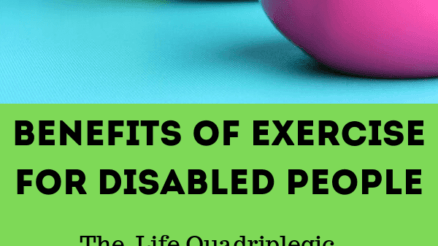Last Updated on 17/11/2019 by Alex Squire
We are now in the middle of Disability History Month which runs every year from 22 November to 22nd of December. So to mark the month I thought I would write a post about what life was like for disabled people in the mediaeval period.
Disabled people were a common sight in the mediaeval period. Most disabled people lived and worked in their communities and were cared for by their family if possible, or members of the church such as monks or nuns. The church saw it as their duty to care for people less fortunate according to Christian teaching. However, some still had to resort to begging on the streets in order to get help.
Attitudes towards disabled people varied with some people believing that disability was a result of sin. Others thought that disabled people were closer to God because they were enduring Purgatory on earth and so would go straight to heaven when they die.
Some disabled people were used as a means of perverse entertainment. Edward Wheatley describes in his book one instance where four blind people were placed in a park and each given a stick. A pig was placed among them and the blind people were told they can have the pig if they killed it. So as the blind people were trying to kill the pig with the sticks they would often hit and injure each other. A crowd would be watching the event, and would have probably found it amusing.
Some people with learning disabilities were chosen to live in royal palaces with the King and Queens of the time. They worked as jesters and provided entertainment for the monarchy, and were well looked after. Henry VIII had a favourite “fool” called William Somer. Henry enjoyed the honesty, humour and directness of William and he could say things to the king that no one else would dare to say. A keeper was employed to look after the “fools” as they couldn’t look after themselves, but the fools were often paid more than the keepers.
Not every person with learning disabilities was lucky enough to live in a Royal Palace. Some would have their property taken away from them if they were deemed to be incapable of looking after themselves. Special juries would decide a person’s mental status by asking them a number of questions. If they were found to be incapable of looking after themselves the King would have custody of their property, but also would have a duty to make sure they were properly looked after.
It was during the mediaeval period that specialist institutions for caring for disabled people first appeared. These were often part of religious institutions and would care for people with leprosy, blindness or physical disabilities. Monasteries or abbeys first began accepting passing strangers who were ill and letting them stay until they recovered.
Soon afterwards the first hospitals began appearing which provided more long-term care for sick people. Britain’s first hospital for mental illness opened in the mediaeval period. It was originally known as Bethlehem Hospital in London, but this was later shortened to Bedlam. The quality of care in these institutions was highly questionable and the patients were often abused.
By the late Middle Ages London had about 35 hospitals ranging in size from large ones to some no bigger than a cottage. Alternatively, Almshouses provided long-term shelter for disabled or elderly people. Places in almshouses were often sought-after because they provided sanctuary and security which was considerably better than living on the streets and begging. Day-to-day life in the almshouses usually consisted of praying and devotion to religion.
However, like I mentioned earlier most disabled people lived and worked in their communities if they could. They were often supported by their friends and family and only entered institutions if they had no other choice. If they could neither work or be supported by family and friends they had to beg for money in the streets.
Some disabled people were able to reach prominent positions in society despite their disability such as Kings and bishops. For example King Richard the third had a scoliosis which probably would have caused him a certain amount of discomfort. King John of Bohemia was blind but this somehow did not stop him from fighting on horseback. Robert the Bruce is believed to have had leprosy at some point in his life. Of course most people in the Middle Ages were not royalty so would not have experienced the same level of lifestyle as a king. But having a disability in the Middle Ages did not necessarily mean you would be marginalised or abused.
The Middle Ages were a time when a professional approach to caring for disabled people first appeared. Although rudimentary and highly flawed at the time this would provide the foundation for the system of care we have today. This is the legacy of the mediaeval period for disabled people.
Sources:
English Heritage, “Disability in the Mediaeval Period 1050 – 1485”: https://historicengland.org.uk/research/inclusive-heritage/disability-history/1050-1485/
“Stumbling Blocks before the Blind: Mediaeval Constructions of a Disability”, Edward Wheatley
British Library, “Representations of Disabilities and Illnesses in Medieval Manuscripts”: http://blogs.bl.uk/digitisedmanuscripts/2016/09/disability-and-illnesses-in-medieval-manuscripts.html






Great article!
Thank you very much 🙂
Great article !
I love this blog very informative thank goodness for progress hey ?
Interesting. I’d always sssumed it was a complete horror show to be disabled back then.
I don’t think it was very pleasant for most disabled people back then, there was probably some nasty stuff going on. But it wasn’t all bad and there were still some people at least cared for disabled people.